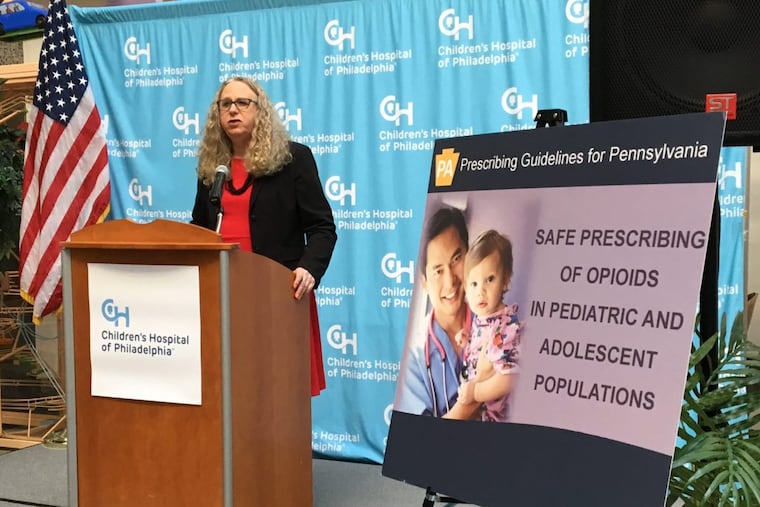Pennsylvania has third-highest rate of drug overdose deaths in the U.S., study finds
Pennsylvania, Ohio, and West Virginia had more than twice the national rate of drug overdose deaths in 2017.

A new study measuring the effectiveness of state health systems around the country found that Pennsylvania has the third-highest rate of drug overdose deaths in the country.
The “scorecard," released by the Commonwealth Fund, a private health-care research foundation, rated Pennsylvania highly on other measures, including access to health care. The state’s 2015 Medicaid expansion has allowed hundreds of thousands to obtain care, including about 20,000 people with substance use disorders, state health officials say.
But Pennsylvania’s opioid crisis is so severe, and so much worse than almost anywhere else in the country, that it’s bringing down life expectancy in the state, researchers said.
The study measured “drug poisoning deaths” in 2017, the last year for which full statewide data are available. Only Ohio and West Virginia had higher overdose death rates than Pennsylvania that year. All three states had more than twice the national rate of drug overdose deaths in 2017. Along with seven other states, including Delaware, the trio have seen overdose deaths increase threefold since 2005.
In Pennsylvania, Maryland, and Ohio, overdose death rates were at least five times higher than alcohol-related deaths (including acute alcohol poisoning and more chronic diseases like liver cirrhosis), and about three times higher than suicide deaths.
East Coast and Southeastern states have been particularly hard-hit by the opioid crisis, the researchers wrote. In the West, alcohol and suicide deaths generally outstrip drug deaths.
Still, said Sarah Collins, the fund’s vice president for health-care coverage and access, “In other indicators, including coverage, Pennsylvania’s ranked very high. What that does for the state is, it puts it in a position where it’s better able to manage a crisis.”
State officials said they were seeing some encouraging signs of progress. After losing more than 5,400 Pennsylvanians to overdoses in 2017, estimates for 2018 were closer to 4,200 overdose deaths — a drop of about 22 percent, Rachel Levine, state secretary of health, said Tuesday.
Philadelphia had 1,217 overdose deaths in 2017 and 1,116 overdose deaths the following year.
The contamination of much of Pennsylvania’s illicit drug supply with fentanyl, a synthetic opioid that is significantly more powerful than heroin, is driving most of the state’s drug deaths, she said.
But Commonwealth Fund researchers said it’s hard to say why certain states — even Medicaid expansion states like Pennsylvania with relatively good health-care access — are affected more by overdose deaths than others.
“We do not have all the correlates of what’s driving [alcohol, suicide, and drug poisoning deaths], of why there are so many regional differences, and we don’t have a broad-base understanding of what’s effective in terms of preventing the rise in what we see,” Collins said.
Levine said that though overdose deaths decreased in 2018, the state’s approach to the opioid crisis is still “all hands on deck.”
Pennsylvania is about to declare its seventh successive disaster declaration over the overdose crisis, which enables state agencies to collaborate in an “opioid command center" and allows state officials to bypass regulations that might hinder a quicker response to the crisis.
The state Centers of Excellence, 45 opioid addiction recovery programs mainly for people on Medicaid, have treated 18,760 people in the last two years. (In Philadelphia alone, city officials have estimated, 50,000 to 70,000 people are addicted to opioids.)
The state has also distributed thousands of doses of the overdose reversal drug naloxone.
“We’re not done by any means, we’re not declaring victory, but we have made a lot of progress,” Levine said. “I’m a positive and optimistic person, and I think we will be successful, but we’re keeping our nose to the grindstone.”